As head of business development for LPL Financial, Rich Steinmeier — like many other executives — had lots on his plate in 2023.
In the fourth quarter, the firm added tax planning services, a high-net-worth — or private wealth — channel and a new outsourced CFO program. It hired a new chief compliance officer, Jim McHale, formerly of Wells Fargo, and brought on Amy Philbrook from Robinhood to be its head of service.
LPL reported assets of $1.2 trillion in the third quarter, along with recruited assets of $31.2 billion. Its headcount stood at 22,404 financial advisors, up 462 from June 30 and a jump of 1,360 from a year earlier.
Steinmeier recently took a break from his busy schedule to look back at 2023 — with the firm and within the financial services industry. He also opened up about the challenges of leading a firm that’s still seen primarily as an independent broker-dealer, despite its aggressive rollout of new advisor channels and services.
The executive, who worked earlier for UBS, Merrill Lynch and McKinsey & Co., weighed in on the “demanding expectations” the firm has for its leaders, turnover rates at the wirehouses and the need to “stay humble” by continuing “to listen to our advisors, and make sure that we are responsive to their needs.”
Here are highlights of our conversation:
THINKADVISOR: When you look back at 2023, what was LPL Financial’s top accomplishment, and what made it happen?
RICH STEINMEIER: It’s pretty clear for 2023: We had our lowest advisor attrition in the history of the firm. I think it could be the lowest in the industry. We are sitting at right around 1% advisor attrition.
Unlike other firms that call it regrettable attrition, and have a caveat to only count [certain] people, I’m actually talking all-in attrition. All-in attrition at the firm is right around 1%. Again, that’s the lowest we’ve ever had.
We also measure our net promoter score. In 2023, we had the highest score since we started recording it. So, we had the highest advisor satisfaction and the lowest attrition in the history of this firm — which is saying something.
How did we get there? The culture of this firm has always been very client centric — and when I say client, I mean advisor. Our client centricity has never wavered.
Our capability set, innovation and ability to meet advisors where they want to run their businesses are what we’ve been working on for several years. It’s paid off in a material way, and advisors are seeing it.
They are seeing that they run their businesses the way they want to run them. They have world-class capabilities. They have a firm that is listening to them, that is evolving to meet their needs, and that really shows up every day to serve them.
It’s very clear that that’s our job. We’re pulling through in lots of ways, and the proof for us is in the pudding. Very few advisors are leaving this firm, and the ones that are here are saying they’re highly satisfied. That’s a fantastic accomplishment that we are very proud of.
How do you see your role, and that of other LPL leaders, in driving that success?
It starts with knowing why we show up every day to work.
I’ve worked at a bunch of other firms. This firm is the most advisor centric; we call it client centric. Other firms call their clients the end investors. We make no claims to the clients of our advisors.
This is the most client-centric firm I’ve ever been a part of and been exposed to. As a point of reference, I’m not just talking about wealth management. I worked for McKinsey and Company for years and served dozens of companies.
Our strength is around who we serve, how we serve them and why. That’s true of the management team here — from my boss, [CEO] Dan Arnold, on down. You can’t work here if you do not deeply respect and want advisors to succeed and also believe in the power of advice delivered through advisors.
There’s an entrepreneurial spirit that pervades the firm. We obviously serve entrepreneurs, and our firm aspires to emulate their entrepreneurial nature while being responsive and reflexive to them.
You could say there’s a good number of folks who spin out of this place in the senior ranks. It’s because we are very demanding in our expectations and around our need to serve those clients.
That’s the singularity of understanding, and we’ve gotten to the point now where people come here because they self-select with that view.
That’s why I joined the firm, because of the mantra and the culture. It’s got some benefits, and that is really why we’re strategically well positioned. If you come here, you are coming here because you believe deeply in serving advisors. That really shines through in how we make decisions.
By the way, we don’t get everything right. We’ve got a lot of capabilities we’re still building into. But it’s not because we have any ambiguity as to who we serve.
What’s a key challenge that you or the firm faced in 2023, and how did you overcome it?
This hits home to me because one of my roles is running recruiting for the firm. I joined here 5 1/2 years ago, and this firm was solidly viewed as an independent broker-dealer. We have worked really hard to expand our capability set to be a much broader, holistic wealth management partner for advisors in the industry.
While our capability set has evolved rapidly and expansively, our perception in the marketplace lags our capability set. So one of the biggest challenges we face as a firm is that we did mean something in the marketplace for over 30 years, which is being this leading independent broker-dealer, but we have really shed that skin.
We are a much broader firm today. We can serve advisors across the board. We have affiliation models that support almost all types of advisors and degrees of sophistication like W-2 models and private wealth models. We support banks, credit unions and insurance firms. We are a broad and leading wealth management firm.
Our perception for many in the industry still sits with that [earlier] kind of IBD, where [advisors] kind of try this or that on, and if it doesn’t fit can move on from it.
That’s a big challenge for us — reshaping how we’re perceived in the marketplace as a broader, leading wealth management firm. We have to do that through influencers, having a more active brand campaign and actually winning by surprising advisors who change the perception of others they know.
That’s why the net promoter score that I referenced earlier is so important. It’s the voice of the advisors that are here, and it’s the most credible voice in the marketplace.
Advisors who know someone who joined us, who view us differently or joined our W-2 model, our strategic wealth services model and some of these different newer models, they call back to those advisors still at their [earlier] firms and help change the perception.
There are two different ways you get the net promoter score. We work with a vendor who surveys our [advisor] clients, and then we get a score from them. We do our survey quarterly with an outside vendor. J.D. Power also does this survey work once a year, usually in the third quarter.
Overall, what do you see as the top wealth management industry issue for 2023, is it still important this year, and what is LPL doing about it?


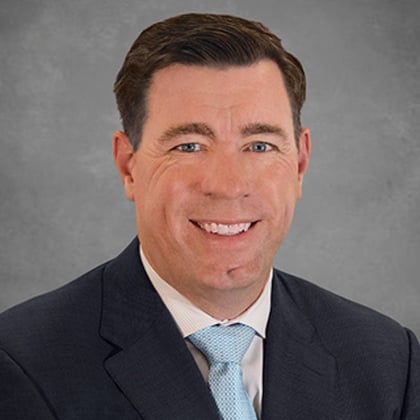
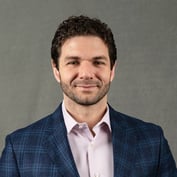


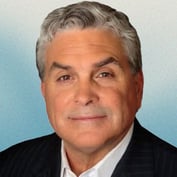


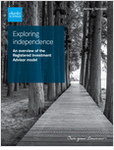
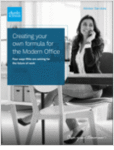
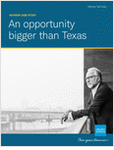
 Copyright © 2024 ALM Global, LLC. All Rights Reserved.
Copyright © 2024 ALM Global, LLC. All Rights Reserved.